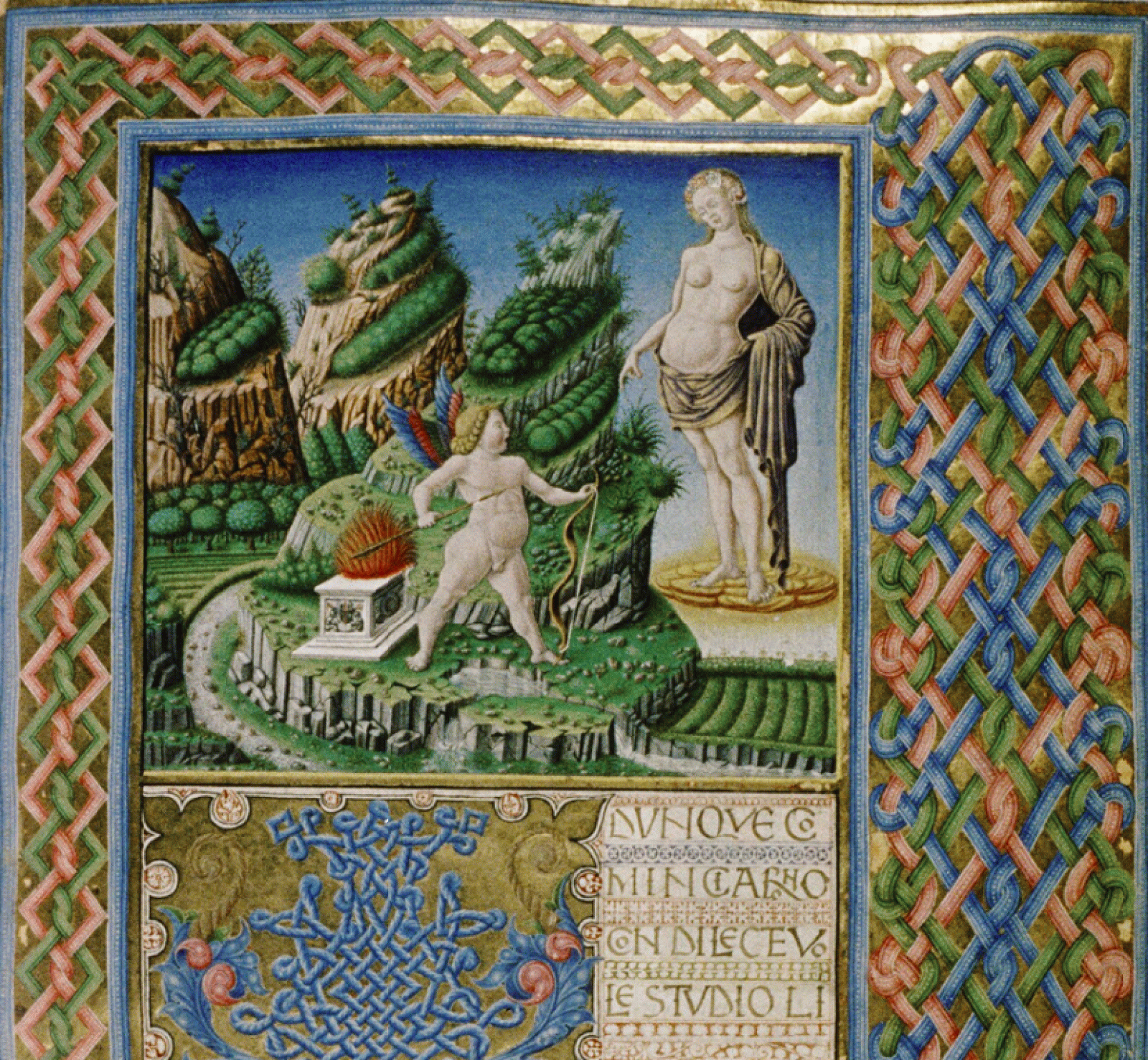Research
Picturing Love in Renaissance Italy: Boccaccio, Petrarch and the Return of Cupid
Rebecca Bowen

‘La sancta dea madre del volante fanciullo’, an illumination of Cupid and Venus in Boccaccio’s Filocolo attributed to Pietro Guindaleri, Oxford, Bodleian Library, MS. Canon. Ital. 85, fol. 25r (detail).
Despite having winged it from classical poetry to modern-day greetings cards with bow and arrows intact, Cupid’s path to ubiquity has not always been direct. In the vernacular literatures arising in medieval Europe, the figures used to represent love proliferated, subordinating the classical god to a series of new personifications that threatened to knock Cupid off his perch. While the influence of Petrarch on the restoration of Cupid as a ubiquitous representation of love in the visual and literary culture of fourteenth and fifteenth-century Italy has been amply studied, the role of Boccaccio has not received equal attention. Seeking to nuance this dominant critical strand and broaden the frame of reference applied to personifications of love in the early Humanist era, this project proposes a systematic review of the figures of love depicted in the works of Boccaccio. As well as analysing and categorising the figures that appear in Boccaccio’s literary works, this project explores their visual afterlives, tracing their translation into the visual sphere through the illumination cycles accompanying their early manuscript transmission. In arguing for an expansion of the corpus of vernacular texts whose influence was, alongside the classicising drives of the time, key to constructing a ‘Renaissance’ aesthetics of love, this project sheds new light on what it meant to picture Cupid in fourteenth- and fifteenth-century Italy, feeding into my wider research interests into how writers and artists imagined love as Cupid in Italian contexts between c.1350 and 1500.


